In the shadowy corners of Southeast Asian jungles and increasingly in terrariums worldwide, a charismatic reptile with a boisterous personality makes its presence known. The Tokay gecko (Gekko gecko) announces itself with a distinctive call that sounds remarkably like its name—”TO-KAY, TO-KAY”—often startling the uninitiated with its volume and persistence. These colorful creatures, with their bluish-gray bodies adorned with bright orange or red spots, have carved out a unique niche in both the natural world and the exotic pet trade.
Despite their somewhat intimidating appearance and notorious defensive bite, Tokay geckos have captivated reptile enthusiasts with their bold personalities, striking appearance, and fascinating behaviors. This exploration into the world of the Tokay gecko reveals why these vocal lizards, while challenging, have earned a dedicated following among those who appreciate their distinctive charm.
Natural Habitat and Distribution

Tokay geckos are native to the tropical rainforests of Southeast Asia, ranging from northeast India and Bangladesh through Thailand, Malaysia, the Philippines, Indonesia, and into parts of New Guinea. These adaptable reptiles have also established populations in Florida, Hawaii, and several Caribbean islands through accidental or deliberate releases. In their natural habitat, they primarily occupy trees, cliff faces, and cave walls, but have readily adapted to human structures throughout their range.
Their exceptional climbing abilities allow them to scurry across vertical surfaces and even upside down on ceilings, making them excellent inhabitants of the forest canopy. The Tokay’s widespread distribution across different environments demonstrates their impressive ecological flexibility and adaptability.
Physical Characteristics and Appearance
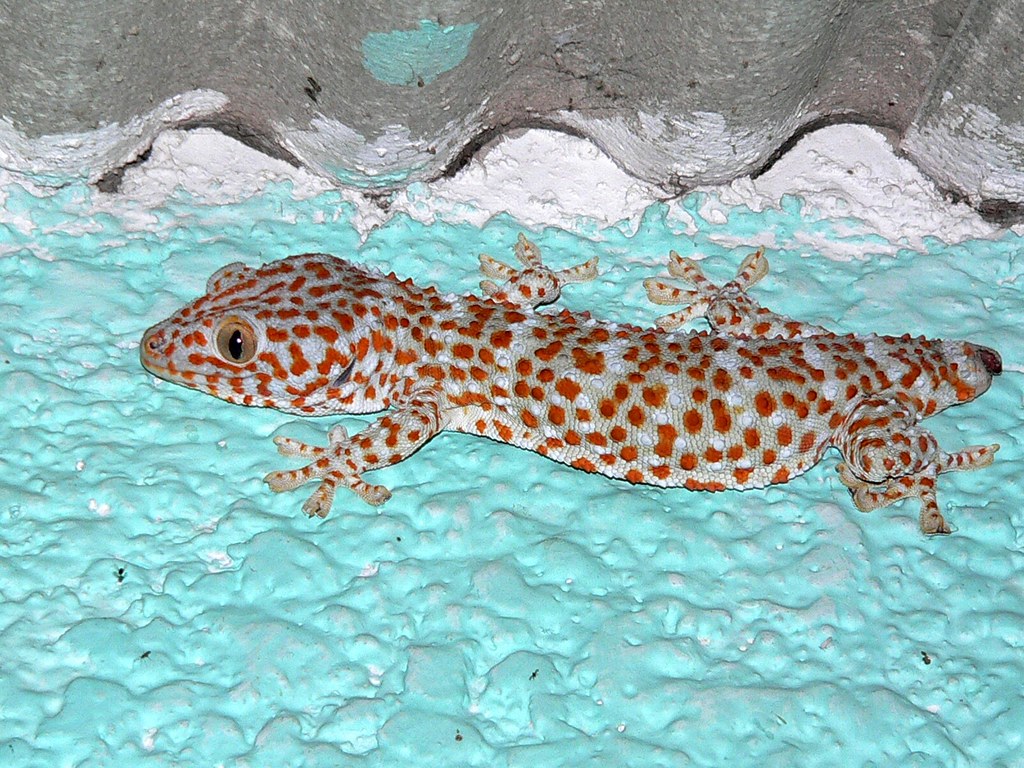
Tokay geckos rank among the largest gecko species in the world, with adults typically reaching 10-15 inches (25-38 cm) in length, including their tail. Their most striking feature is their distinctive coloration—a bluish or grayish body covered with bright orange or red spots that serve as a warning to potential predators. This vibrant pattern is complemented by large, expressive eyes with vertical pupils that give them excellent night vision for their nocturnal lifestyle.
Perhaps their most remarkable physical attribute is their specialized toe pads, which contain millions of microscopic hair-like structures called setae that allow them to adhere to virtually any surface, even glass. Male Tokays can be distinguished from females by their more prominent femoral pores, bulkier head, and generally larger overall size.
The Famous Tokay Call
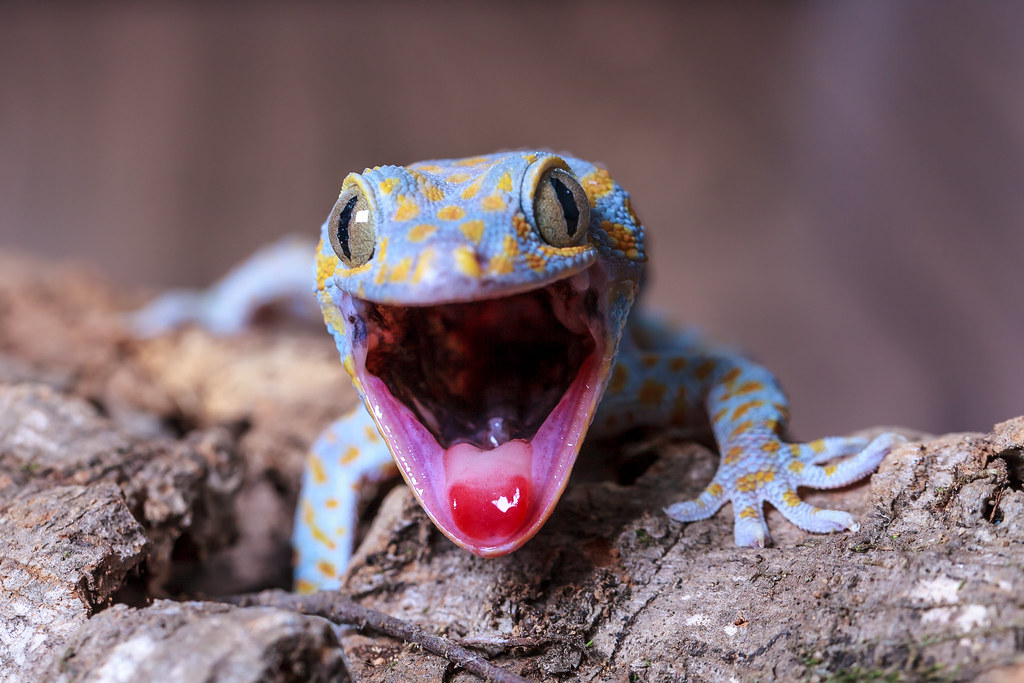
The Tokay gecko’s vocalizations stand out as among the loudest of any gecko species, with their characteristic “TO-KAY” call that can reach up to 100 decibels—comparable to a car horn at close range. This distinctive call, which gives the gecko its common name, is primarily made by males to establish territory and attract females during breeding season. The call typically consists of an initial loud “TO” followed by up to 10 quieter “KAY” sounds in rapid succession, creating a unique audio signature in the forests they inhabit.
Beyond their namesake call, Tokays produce an impressive repertoire of vocalizations including chirps, barks, and hisses when threatened or agitated. These vocal capabilities make them unique among reptiles, many of which have limited or no vocalization abilities.
Defensive Behavior and Reputation
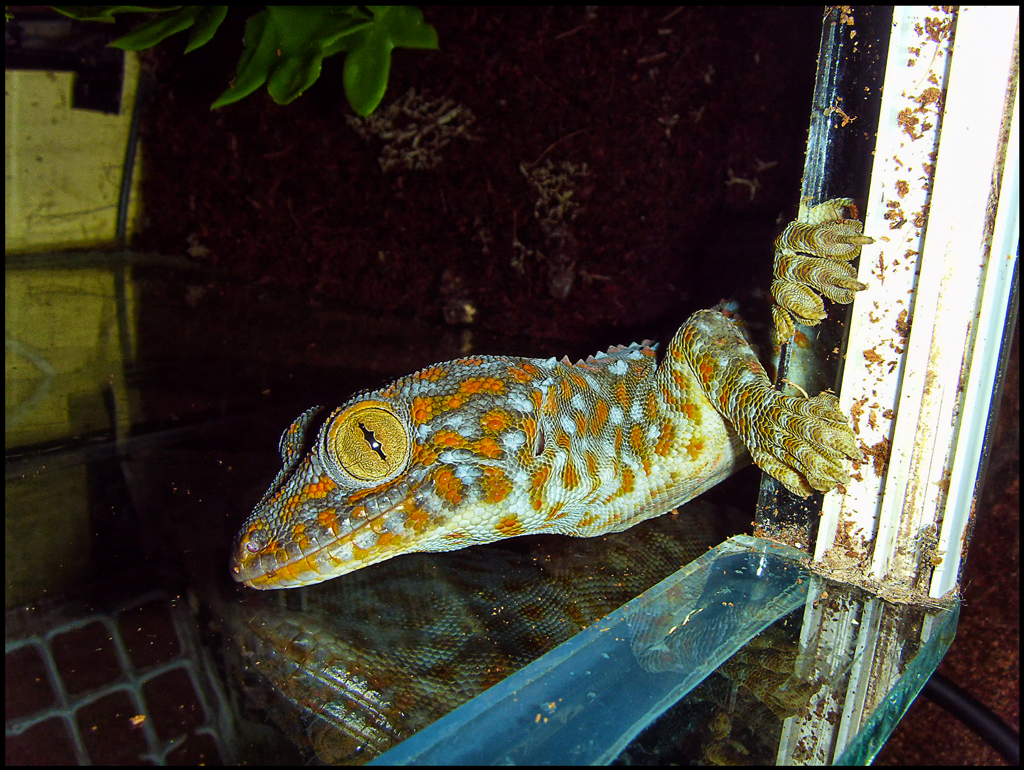
Tokay geckos have earned a formidable reputation for their defensive behavior, most notably their powerful bite which they deliver with remarkable tenacity. Unlike many lizards that bite and release, Tokays are known to clamp down and hold on, sometimes for several minutes, giving rise to their nickname “the pit bull of the gecko world.” When threatened, they display an intimidating defensive posture—opening their mouth wide to reveal a bright pink or blue interior, vocalizing loudly, and inflating their bodies to appear larger to potential predators.
This aggressive defensive strategy serves them well in the wild but has contributed to their challenging reputation in captivity. Despite their intimidating behavior, Tokays typically only bite when they feel cornered or threatened, relying first on camouflage and escape as primary defensive strategies.
Hunting and Feeding Habits
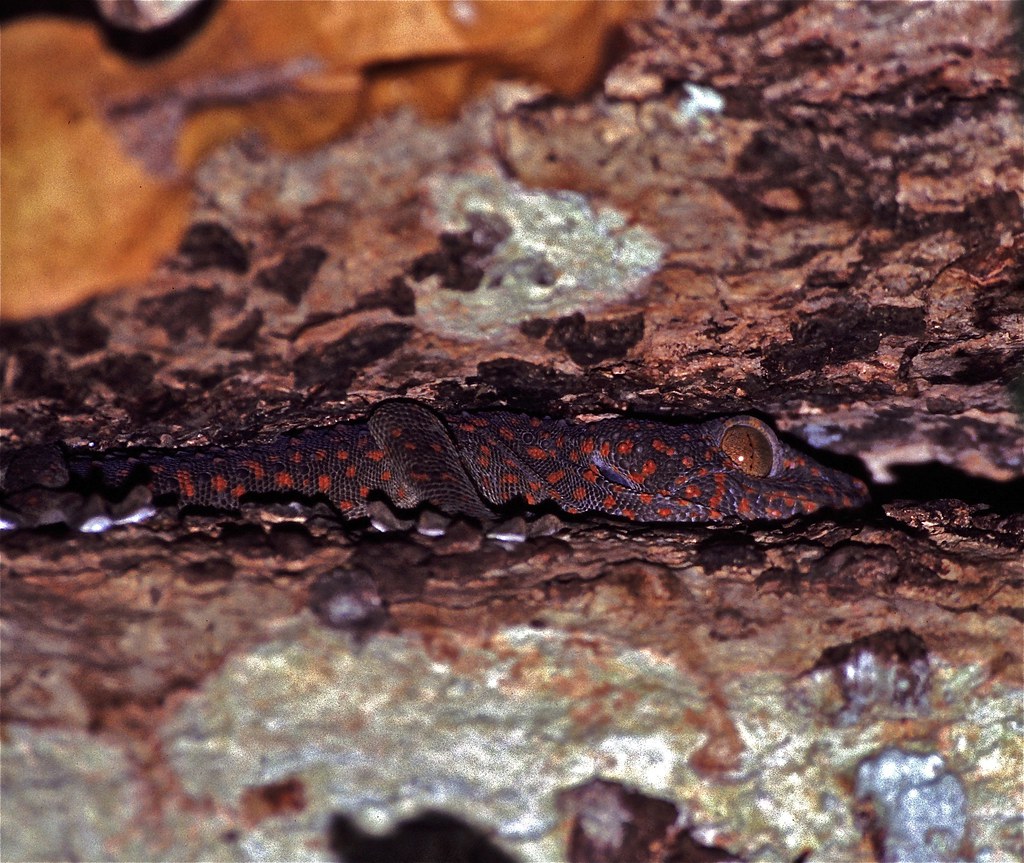
As nocturnal ambush predators, Tokay geckos emerge at night to hunt a variety of prey with impressive efficiency. Their diet primarily consists of insects such as cockroaches, crickets, and beetles, but they are opportunistic feeders that will also consume smaller lizards, young rodents, and even small birds if the opportunity arises. Tokays utilize a sit-and-wait hunting strategy, remaining motionless until prey comes within striking distance, then lunging forward with remarkable speed to capture their meal.
Their strong jaws and sharp teeth allow them to quickly dispatch prey, which they swallow whole rather than chewing. In captivity, Tokay geckos benefit from a varied diet that includes gut-loaded insects dusted with calcium and vitamin supplements to prevent nutritional deficiencies.
Reproduction and Life Cycle
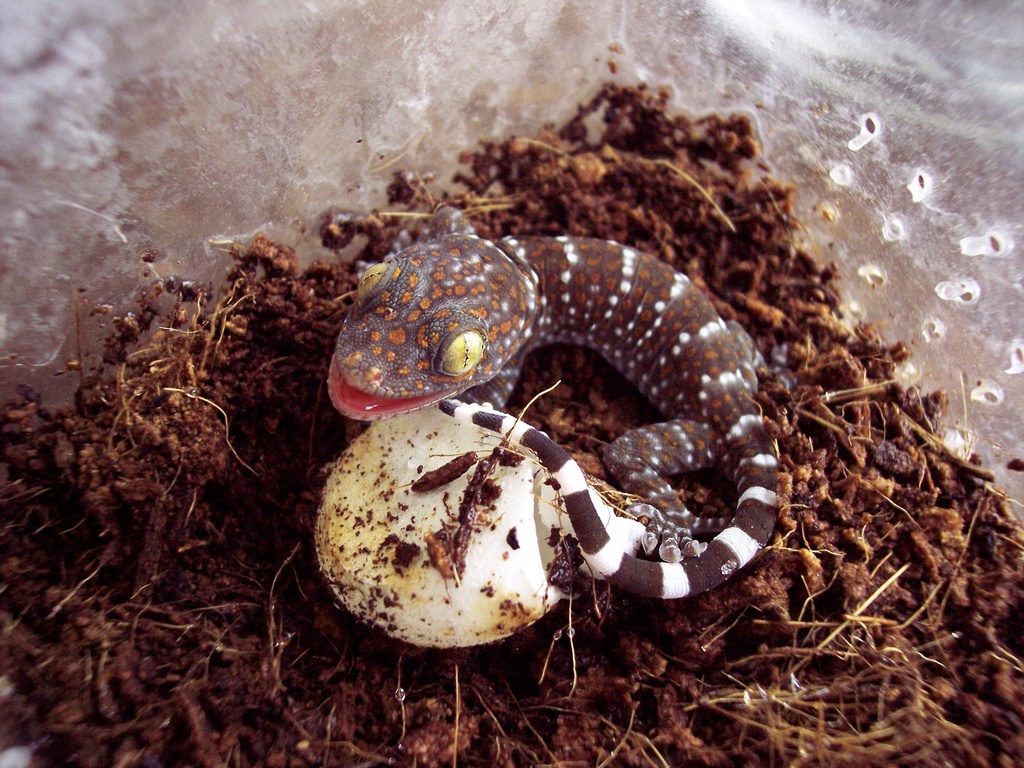
The reproductive cycle of Tokay geckos begins with elaborate courtship rituals involving vocalizations and physical displays by the males to attract potential mates. After successful mating, females produce clutches of two hard-shelled eggs, which they lay in protected locations such as tree hollows or crevices in buildings. Unlike many reptiles, Tokay females demonstrate parental care by guarding their eggs until they hatch approximately 3-6 months later, depending on temperature conditions.
A particularly remarkable aspect of their reproduction is their ability to produce multiple clutches per year, with females capable of laying eggs every 4-6 weeks during breeding season. Young Tokays are independent from birth and reach sexual maturity at approximately 1-2 years of age, with a potential lifespan of 10-15 years in captivity.
Tokays in Traditional Medicine
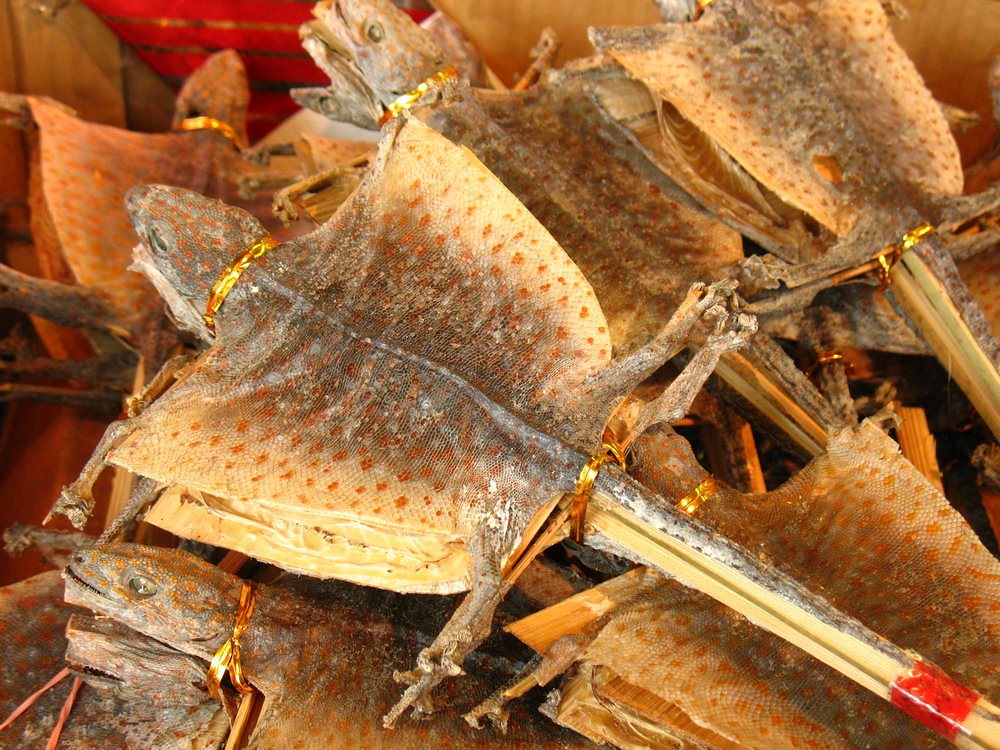
Throughout parts of Asia, particularly in China and Vietnam, Tokay geckos have been utilized in traditional medicine for centuries, with claims that they can treat various ailments including asthma, diabetes, and even HIV/AIDS. This medicinal demand has created significant pressure on wild populations, with dried Tokays commanding high prices in traditional medicine markets. In 2011, unfounded rumors that Tokay geckos could cure cancer led to a massive spike in poaching, with individual specimens allegedly selling for thousands of dollars.
Scientific research has found no evidence supporting these medicinal claims, yet the practice continues to threaten wild populations in many regions. This traditional use represents one of the greatest conservation challenges for the species, as it drives unsustainable collection from natural habitats.
Conservation Status and Threats
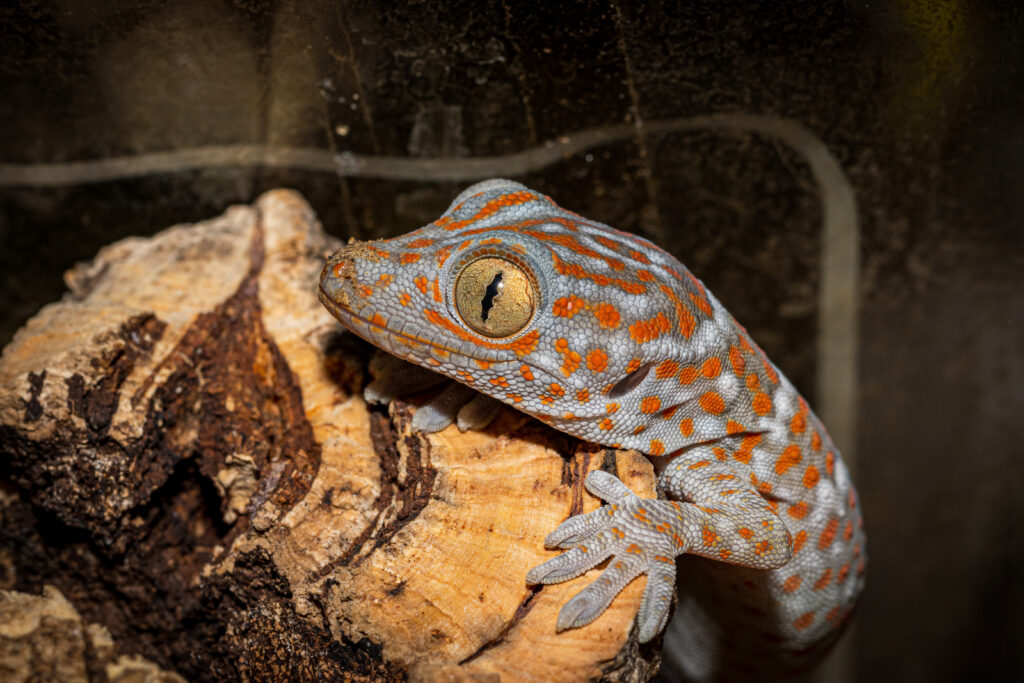
While Tokay geckos remain relatively common throughout much of their range, their populations face increasing pressure from multiple threats that have raised conservation concerns. The primary threat comes from extensive collection for the pet trade and traditional medicine markets, with millions of individuals estimated to be harvested from the wild annually. Habitat destruction through deforestation and urban development further compounds population pressures by reducing available natural habitat.
In response to these concerns, the species was listed in Appendix II of CITES (Convention on International Trade in Endangered Species) in 2019, regulating international trade to ensure it remains sustainable. Despite these protections, illegal collection continues in many areas, highlighting the need for stronger enforcement and sustainable captive breeding programs.
Tokays as Pets: Housing Requirements
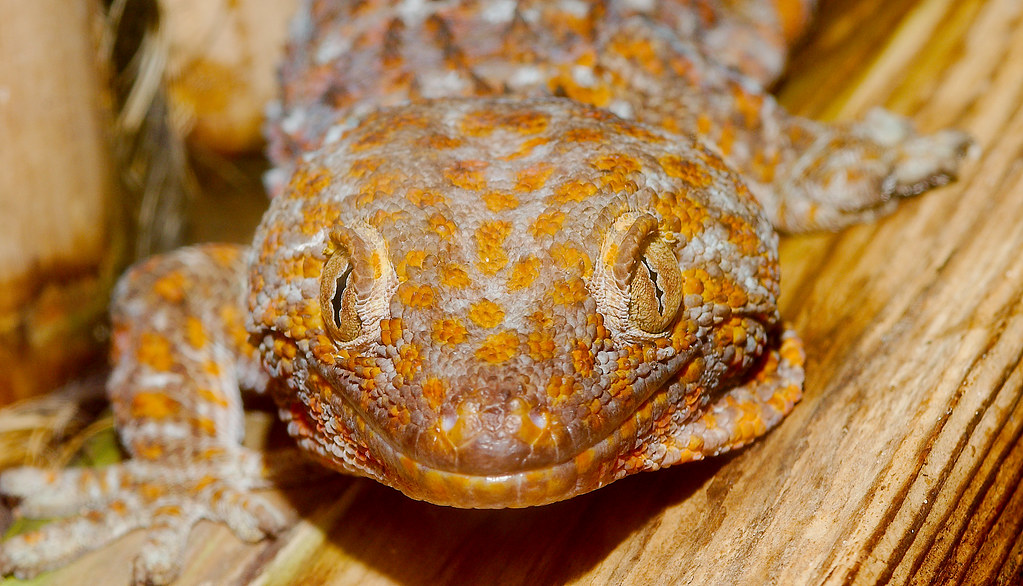
Providing appropriate housing for a Tokay gecko requires careful attention to both size and environmental conditions to replicate their natural habitat. The minimum enclosure size for a single adult should be at least 20 gallons (preferably larger), with a vertical orientation that accommodates their arboreal nature and climbing behaviors. The terrarium should include numerous climbing surfaces such as cork bark, bamboo, and sturdy branches positioned at various angles to create a complex three-dimensional environment.
Temperature gradients are essential, with a warm side of 85-90°F (29-32°C) during the day and a cooler side around 75-80°F (24-27°C), along with a nighttime drop to 70-75°F (21-24°C). Humidity levels should be maintained between 60-80% through regular misting and a large water dish, which helps support proper shedding and overall health.
Handling and Taming Challenges
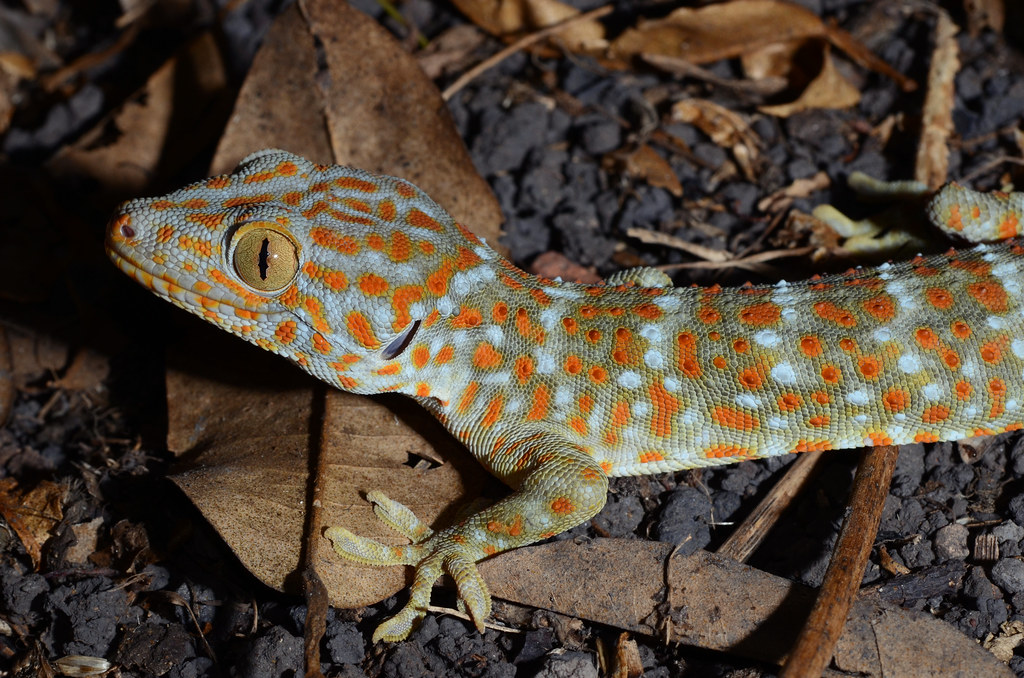
Tokay geckos present unique challenges when it comes to handling and taming, earning them a reputation as “display pets” rather than handling candidates. Wild-caught specimens, which unfortunately still make up a significant portion of the pet trade, are particularly defensive and may never fully acclimate to handling. Captive-bred individuals raised with regular, gentle interaction from a young age show greater potential for taming, though patience and consistent approach techniques are essential.
When handling is necessary, wearing thin leather gloves is advisable to prevent painful bites, especially with new or unfamiliar specimens. The taming process typically involves short, regular sessions where the keeper allows the gecko to become accustomed to their presence before attempting direct contact, gradually building trust over months or even years.
Tokay Gecko Color Morphs
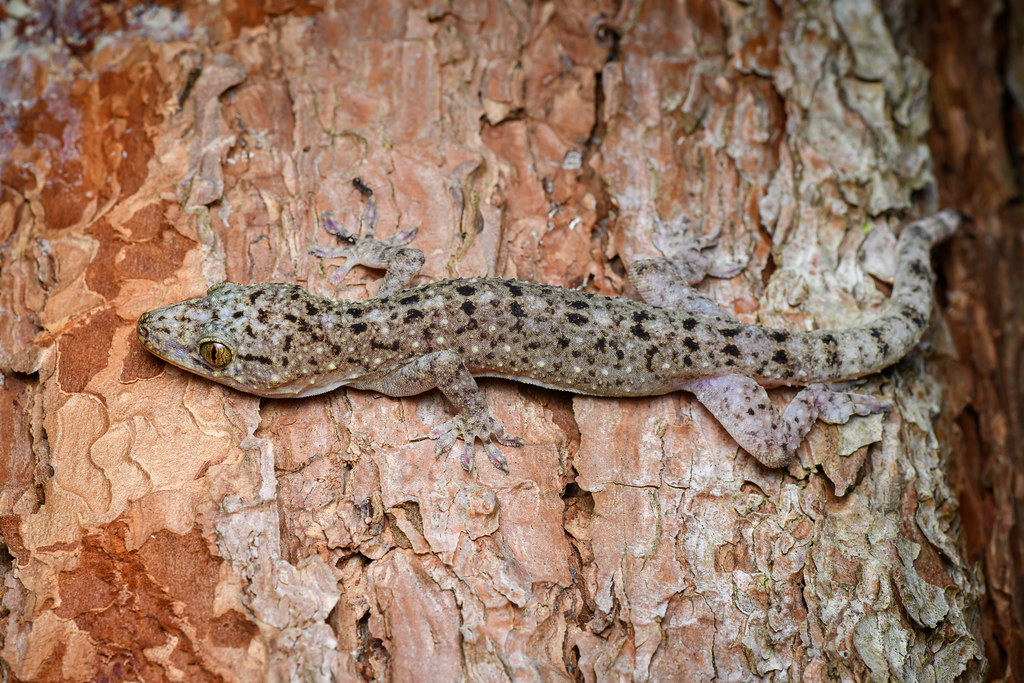
While the classic blue-gray body with orange spots remains the most recognizable form of the Tokay gecko, selective breeding in captivity has produced several striking color morphs that command premium prices in the pet trade. The leucistic or “powder blue” morph displays a powder-blue body with reduced or absent orange spotting, creating an ethereal appearance highly sought by collectors.
Hypomelanistic variants show reduced dark pigmentation, resulting in brighter, more vibrant base colors and patterns that seem to glow under proper lighting. Perhaps most dramatic is the “calico” morph, which exhibits irregular patches of different colors creating a patchwork appearance unlike the typical spotted pattern. These morphs, while visually stunning, should ideally come from established captive breeding programs rather than wild collection to minimize impact on natural populations.
Unique Adaptations and Abilities
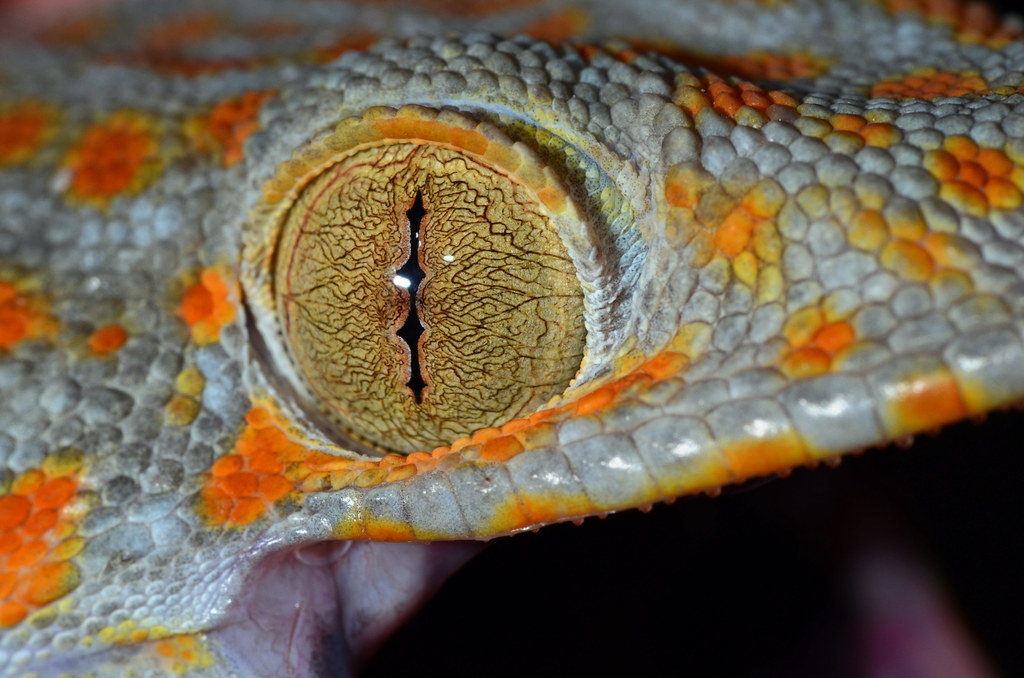
Tokay geckos possess an impressive arsenal of evolutionary adaptations that have contributed to their success across diverse habitats. Their most celebrated adaptation is their adhesive toe pads, which utilize van der Waals forces—molecular attraction between the millions of microscopic setae on their feet and the climbing surface—allowing them to support their entire body weight while climbing vertical surfaces or even hanging upside down. Unlike many lizards that shed their tails as a defense mechanism, Tokays have partial caudal autonomy, meaning they can drop a portion of their tail if grabbed, though this regeneration is less complete than in some other gecko species.
Their remarkable night vision comes from specialized retinal structures that are up to 350 times more sensitive to light than the human eye, enabling efficient nocturnal hunting. Additionally, Tokays possess specialized cells in their skin that allow them to lighten or darken their coloration based on temperature, stress levels, and time of day.
Ecosystem Role and Benefits to Humans
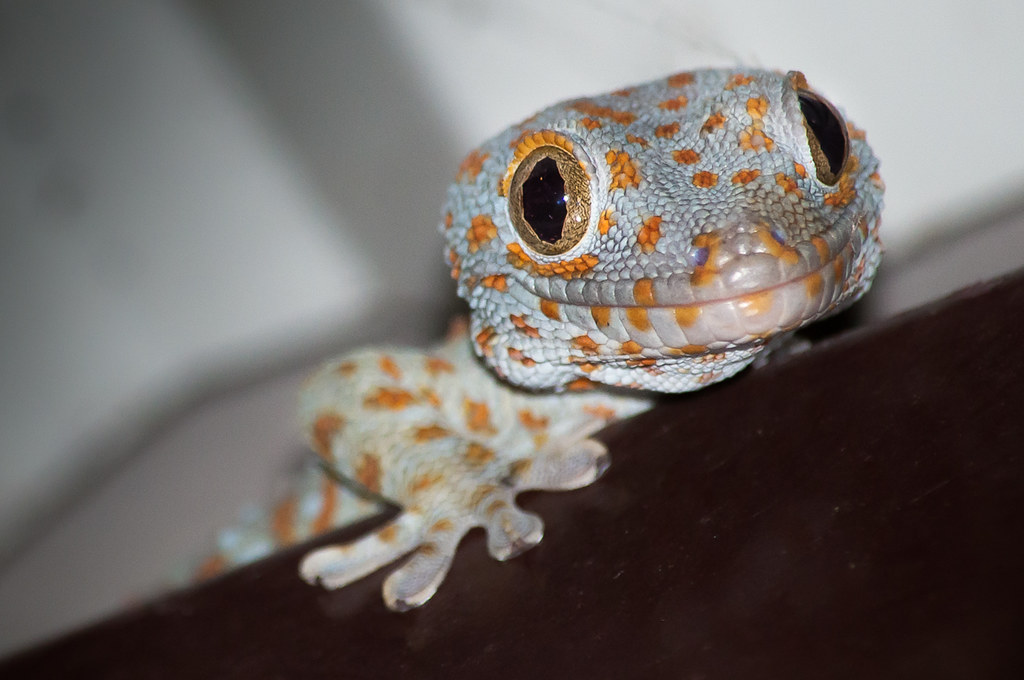
Within their natural ecosystems, Tokay geckos serve as important mid-level predators that help control insect populations, particularly nocturnal pest species that might otherwise flourish unchecked. This natural pest control function extends to human habitations throughout their range, where they are often welcomed for their consumption of cockroaches, mosquitoes, and other household pests. In rural areas of Southeast Asia, many homeowners appreciate having Tokays in their houses despite their loud calls, recognizing their value in controlling problematic insects without the use of chemical pesticides.
Their predatory role also extends to smaller reptiles and rodents, helping to maintain balance in complex tropical ecosystems. Beyond their ecological contributions, Tokays have cultural significance in many Asian countries, appearing in folklore, art, and traditional stories as symbols of good fortune and protection.
Scientific Research and Discoveries
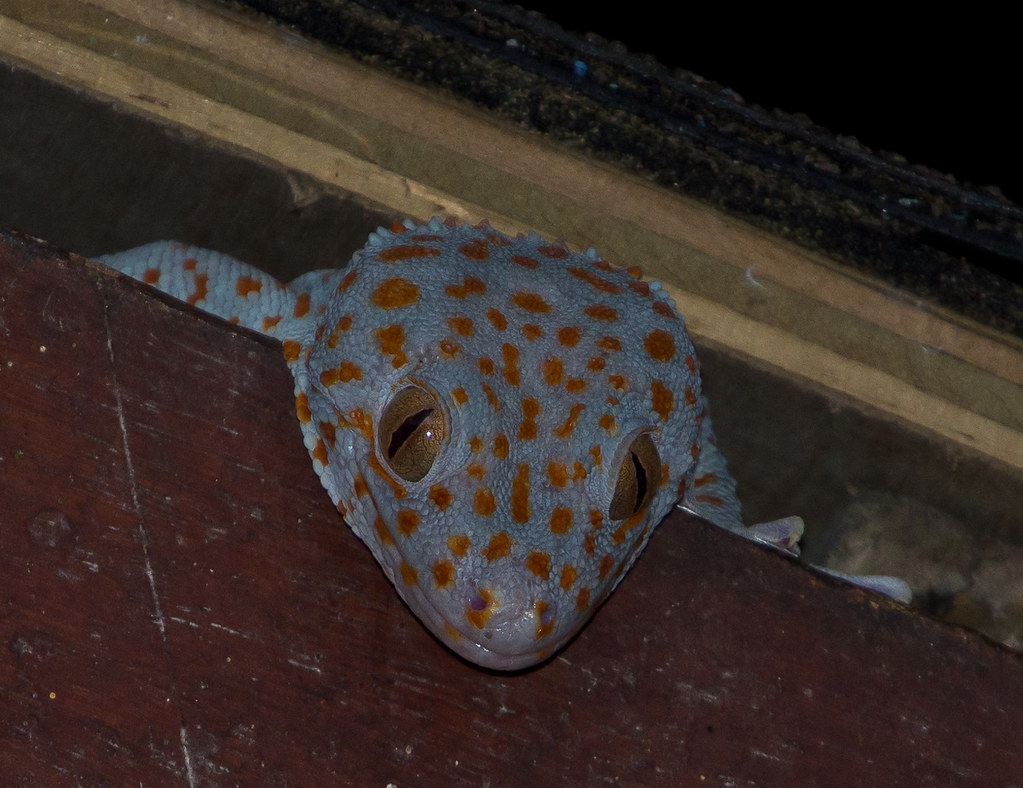
The unique characteristics of Tokay geckos have made them subjects of fascinating scientific research across multiple disciplines. Biomechanics researchers have extensively studied their adhesive toe pad system, inspiring developments in synthetic adhesives and climbing robots that mimic gecko technology for applications ranging from industrial maintenance to potential space missions. Their powerful vocalizations have been analyzed by bioacousticians to understand how such a small reptile produces sounds of such remarkable volume and complexity.
More recently, medical researchers have investigated certain proteins in Tokay gecko saliva that show antimicrobial properties, potentially offering new avenues for antibiotic development. Genetic studies have also revealed that what was long considered a single species may actually represent a complex of closely related species, with researchers in 2019 identifying a distinct northern lineage now classified as Gekko gecko and a southern lineage as Gekko reevesii, suggesting that Tokay biodiversity may be greater than previously recognized.
The Tokay gecko, with its startling vocalizations and fierce reputation, embodies nature’s fascinating contradictions—both intimidating and captivating, challenging yet rewarding. These remarkable reptiles continue to thrive at the intersection of human and natural worlds, adapting to environments from pristine rainforests to urban buildings. While their management as pets requires dedication and respect for their natural behaviors, those who appreciate them understand that their spirited temperament is precisely what makes them special.
As conservation efforts and sustainable breeding programs develop, there’s hope that future generations will continue to be surprised by that distinctive “TO-KAY” call echoing through forests and terrariums alike. In their unique blend of beauty, behavior, and biological adaptations, Tokay geckos remind us that sometimes, the most memorable creatures are those that refuse to be ignored.

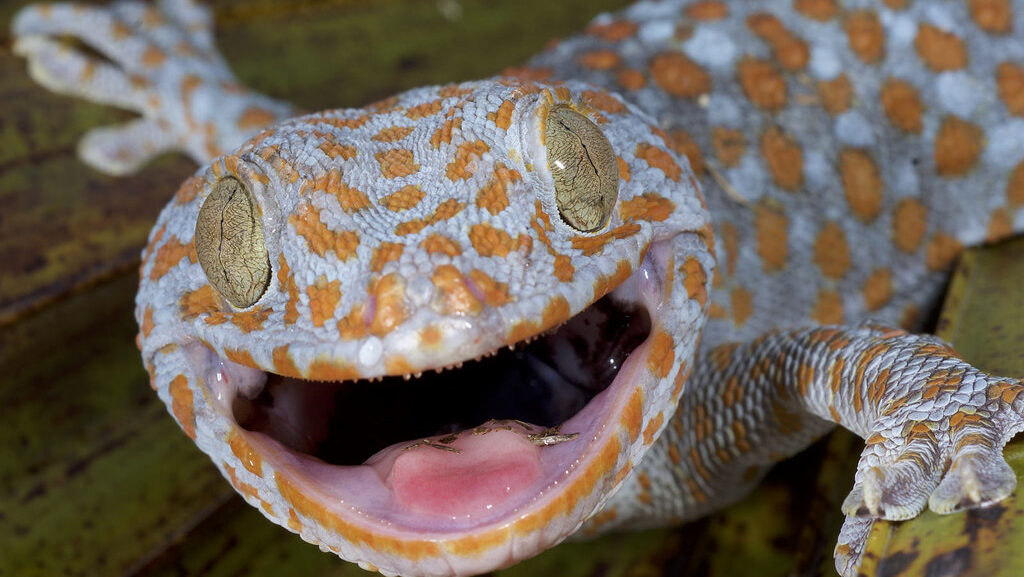
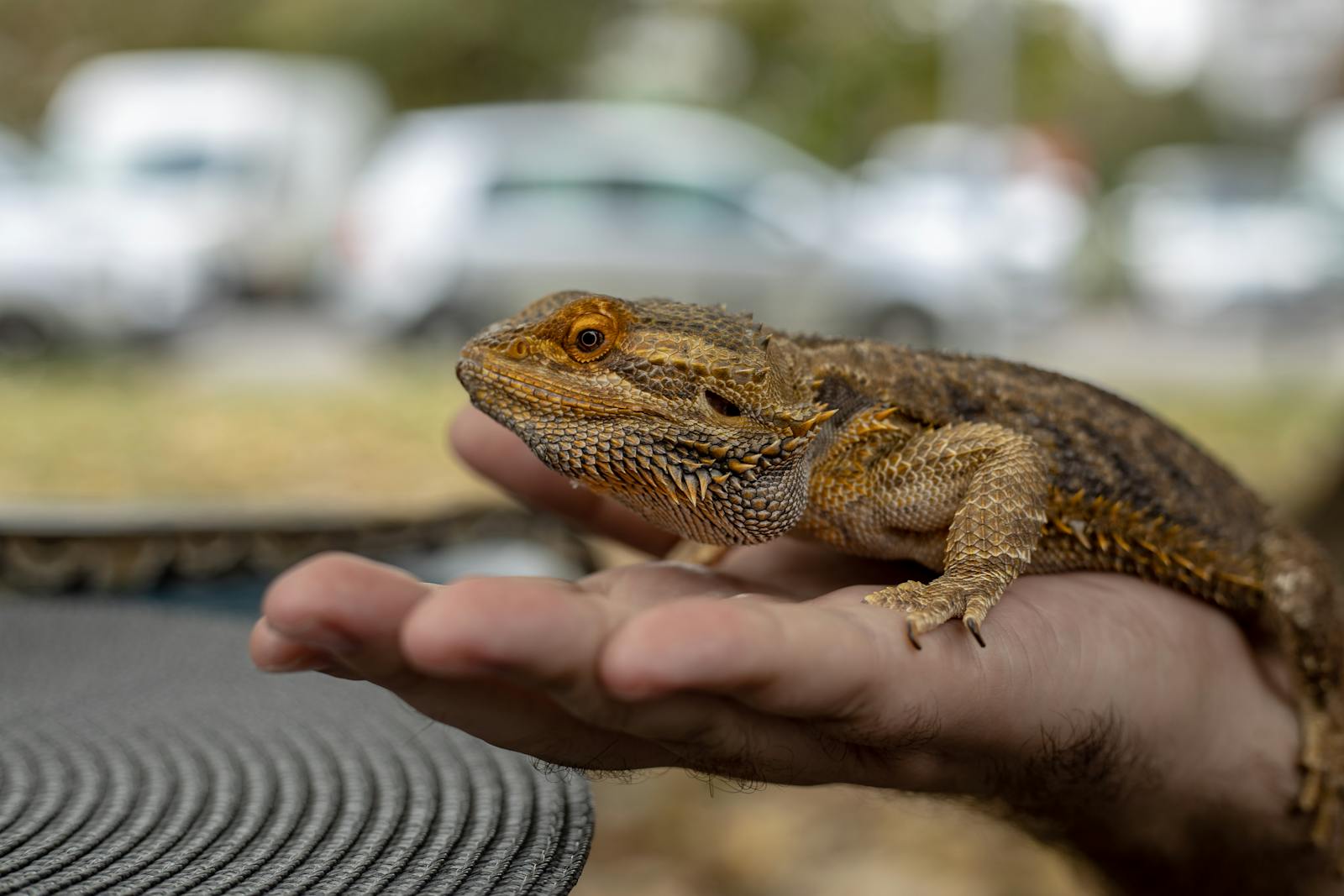
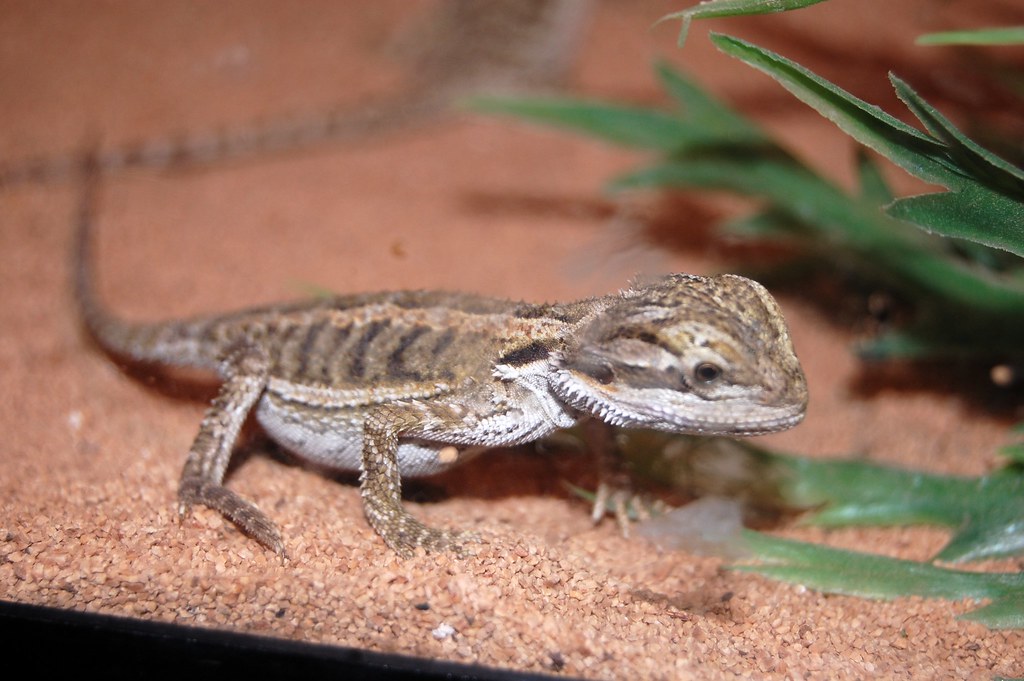
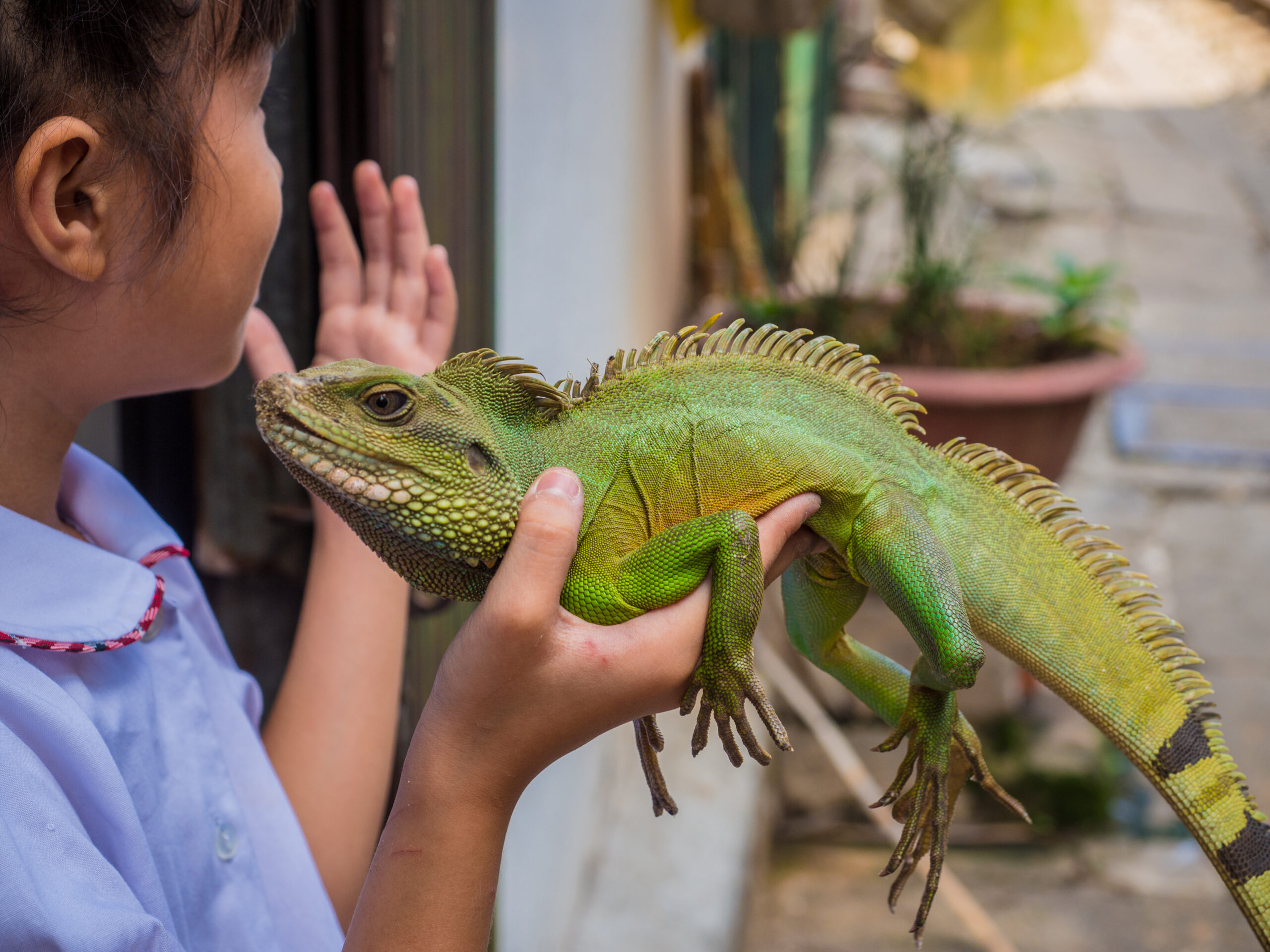
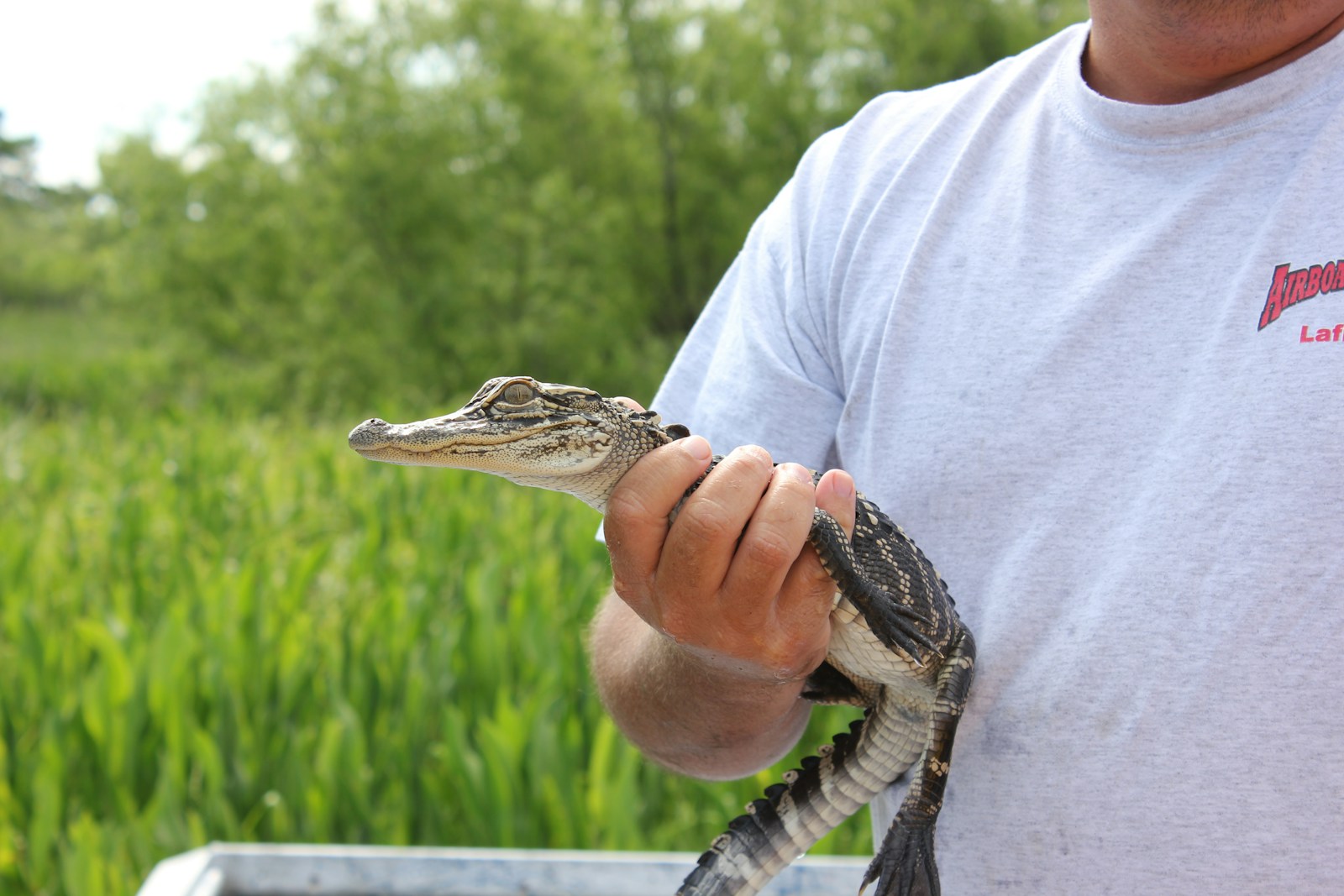

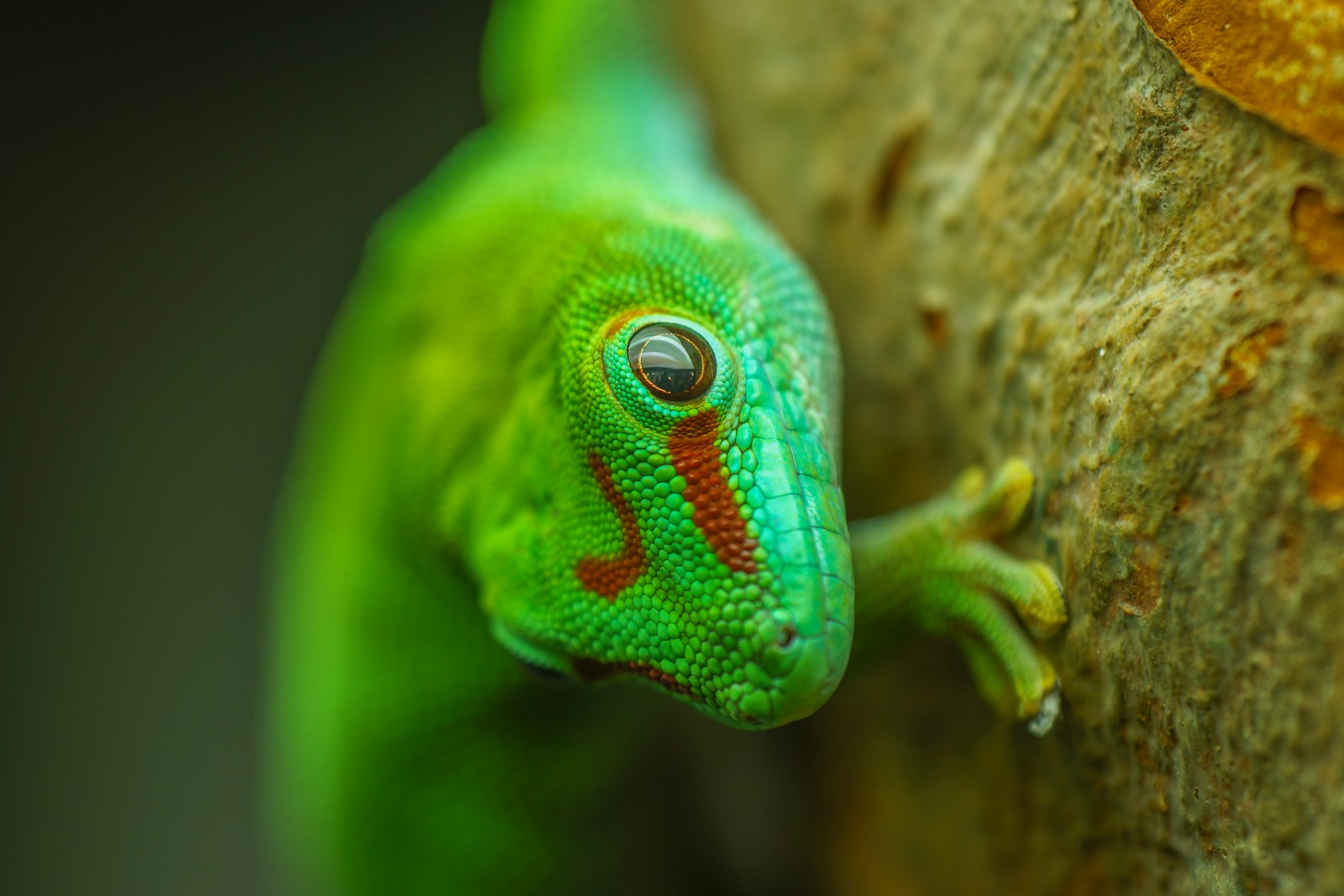
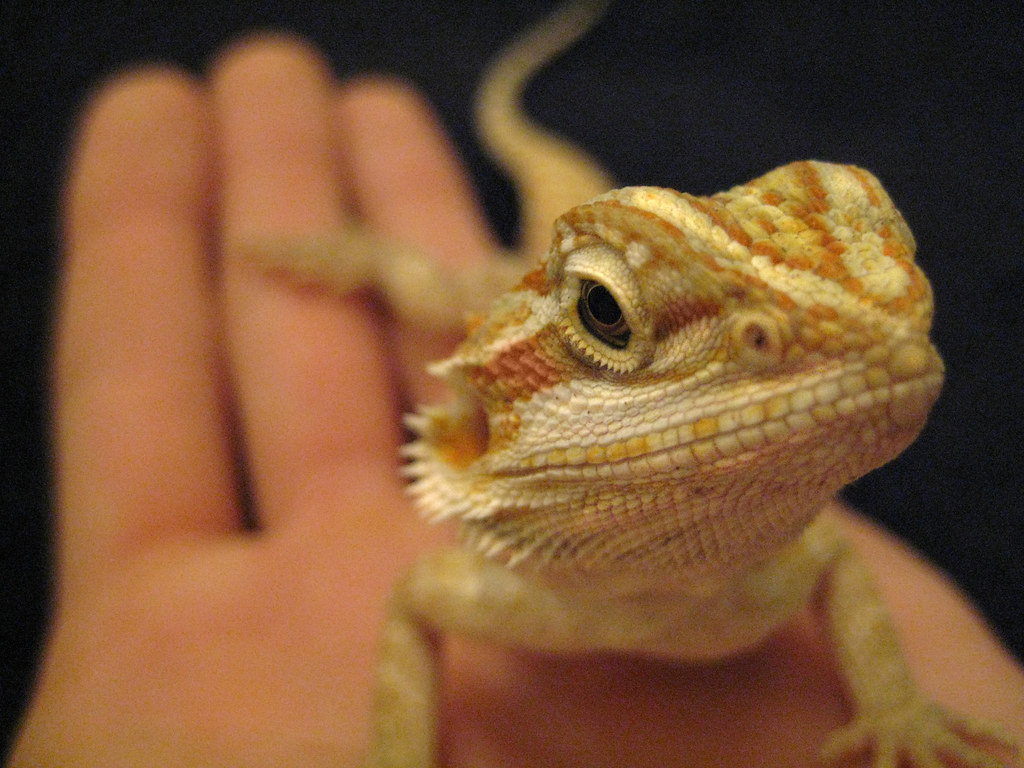
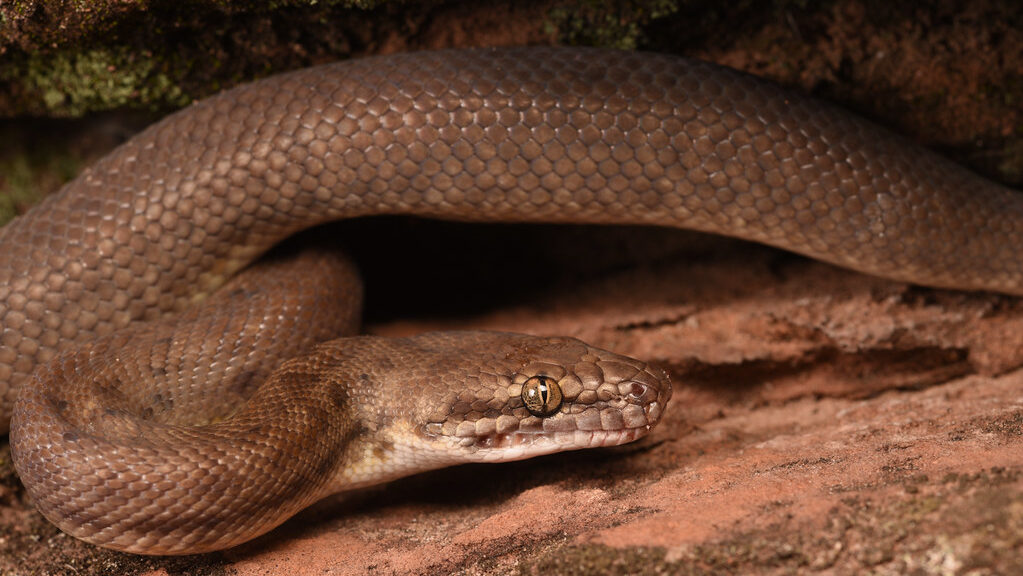
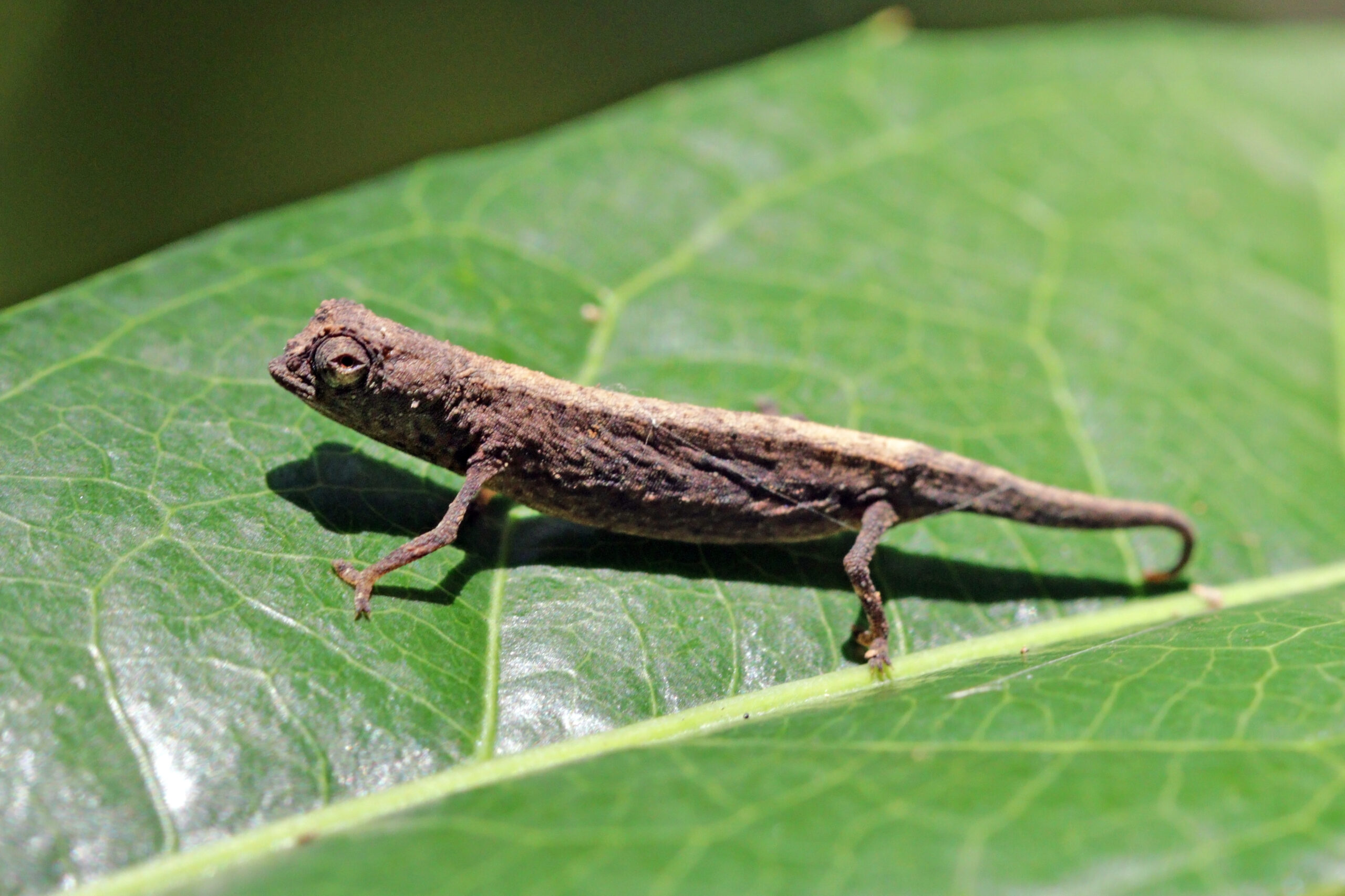





Leave a Reply